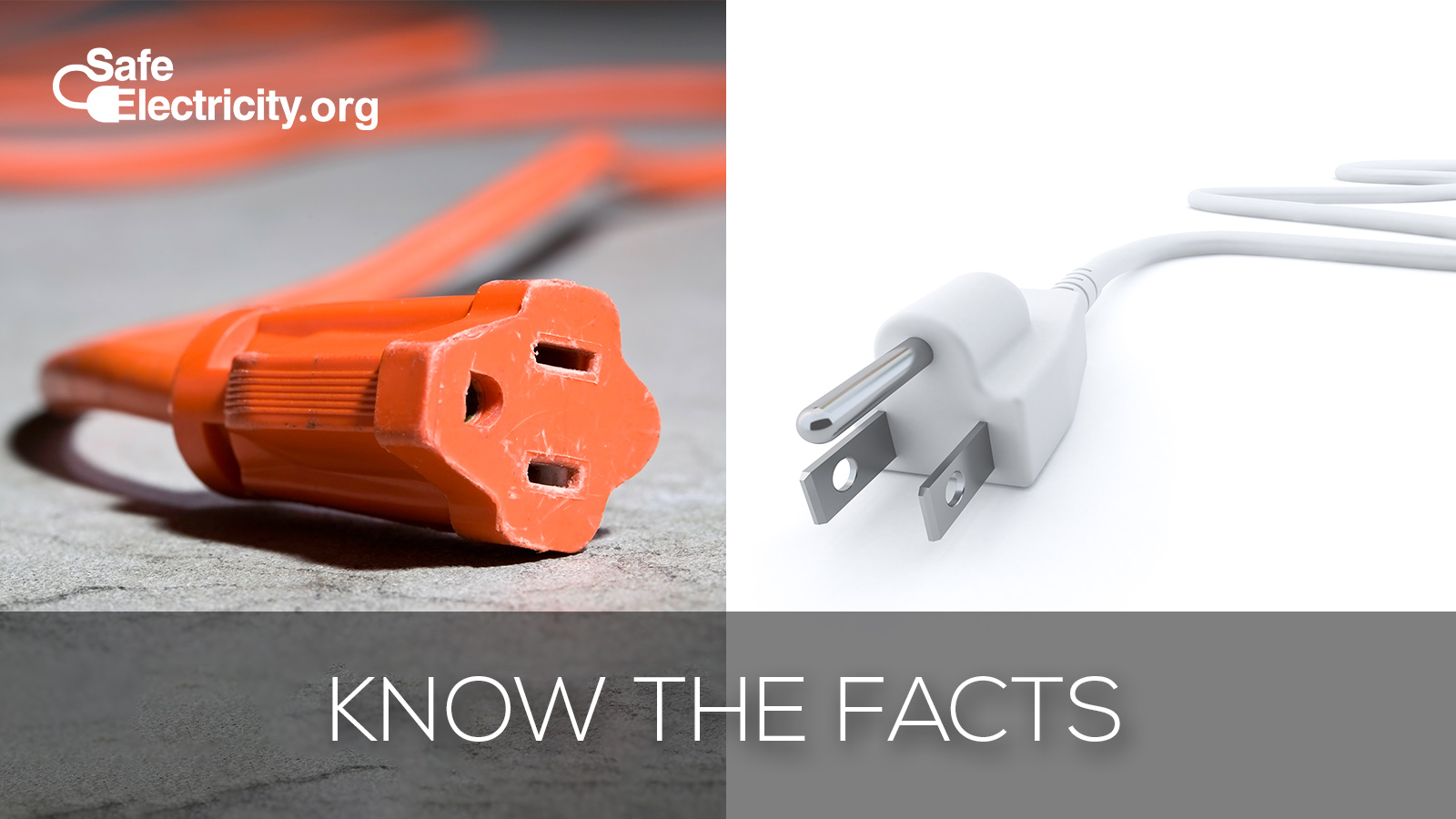Next time you reach into the deep abyss of your junk drawer for an extension cord, what should you be thinking? (Besides the fleeting thought that it's time to clean out that junk drawer?) You should be giving your extension cord some love by inspecting it before you use it. Make sure it doesn't have any signs of wear like cracks or fraying. And if you can't remember when you purchased it, it's probably time to replace it.
Safe Electricity offers additional tips to keep you and your family safe while using this common household item found in junk drawers and toolboxes everywhere.
Make sure:
- The plug prongs and the slots of the extension cord match (two prongs versus three); never try to plug a three-pronged cord into a two-slotted outlet.

If you have grounded outlets (with three slots), it's time to upgrade to a three-pronged cord. - The plug is fully inserted into the extension cord; unplug when not in use.
- You use the cord temporarily; have permanent wiring installed by an electrician if use is long-term.
- The extension cord is certified by an independent testing laboratory.
- Cords used outdoors are plugged into a GFCI outlet.
- You store the cords indoors when not in use.
Conversely:
- NEVER plug major appliances, such as a window air conditioner or refrigerator, into an extension cord ill-equipped for the job. Commonplace household extension cords (those that appear thin and flat and are often inexpensive) and power strips cannot handle surges in power.
- NEVER cut the bottom lone prong off to fit in a two prong receptacle. This could create a shock hazard.
- DON'T stretch an extension cord.
- DON'T drape cords in walkways where people could trip over them.
- DON'T use an indoor-rated extension cord outdoors.
- DON'T use them near water sources (pools, sprinklers, puddles).
- DON'T "string" or lengthen cords by plugging one extension cord into another.
- DON'T overheat or overload an extension cord, place one under rugs or carpets in high-traffic areas, or drive over one when using it outside.
Don't take your trusty friend, the extension cord, for granted. Give it a once-over and take care when using it, and it should serve you well. For additional safety tips, visit SafeElectricity..
Headline image of extension cords, jumper cables, and hammer by A3DigitalStudio from Pixabay. Article and know-the-facts image courtesy of SafeElectricity.org with modifications by Valley Rural Electric Cooperative, Inc.


